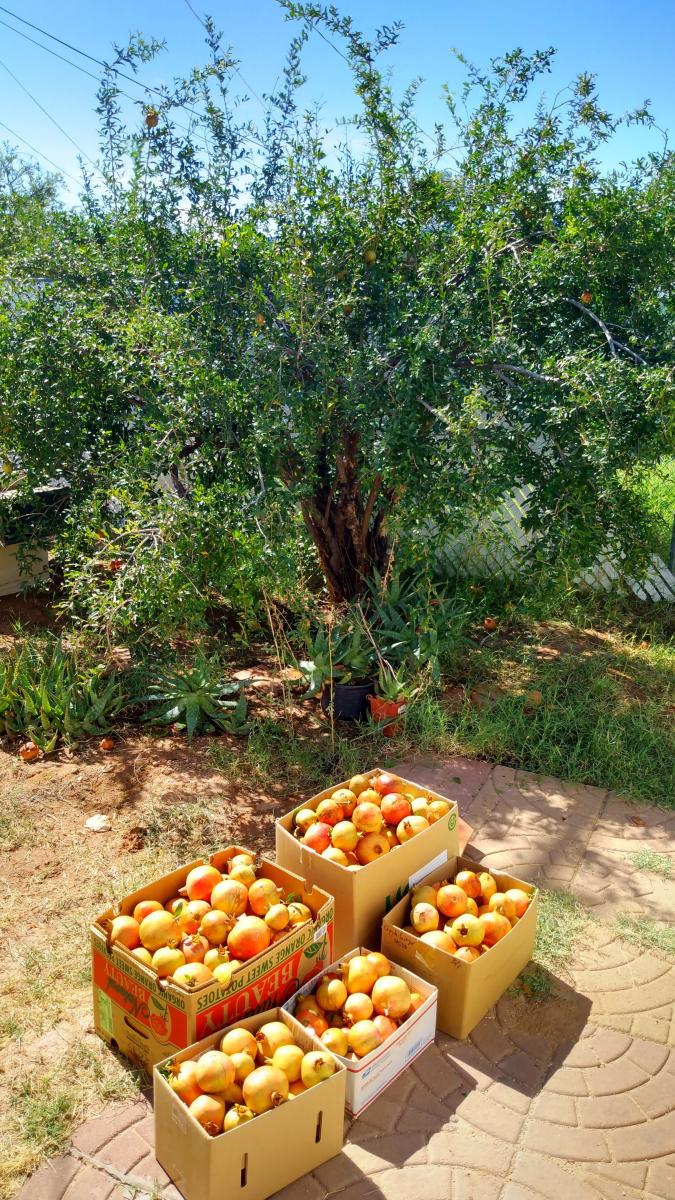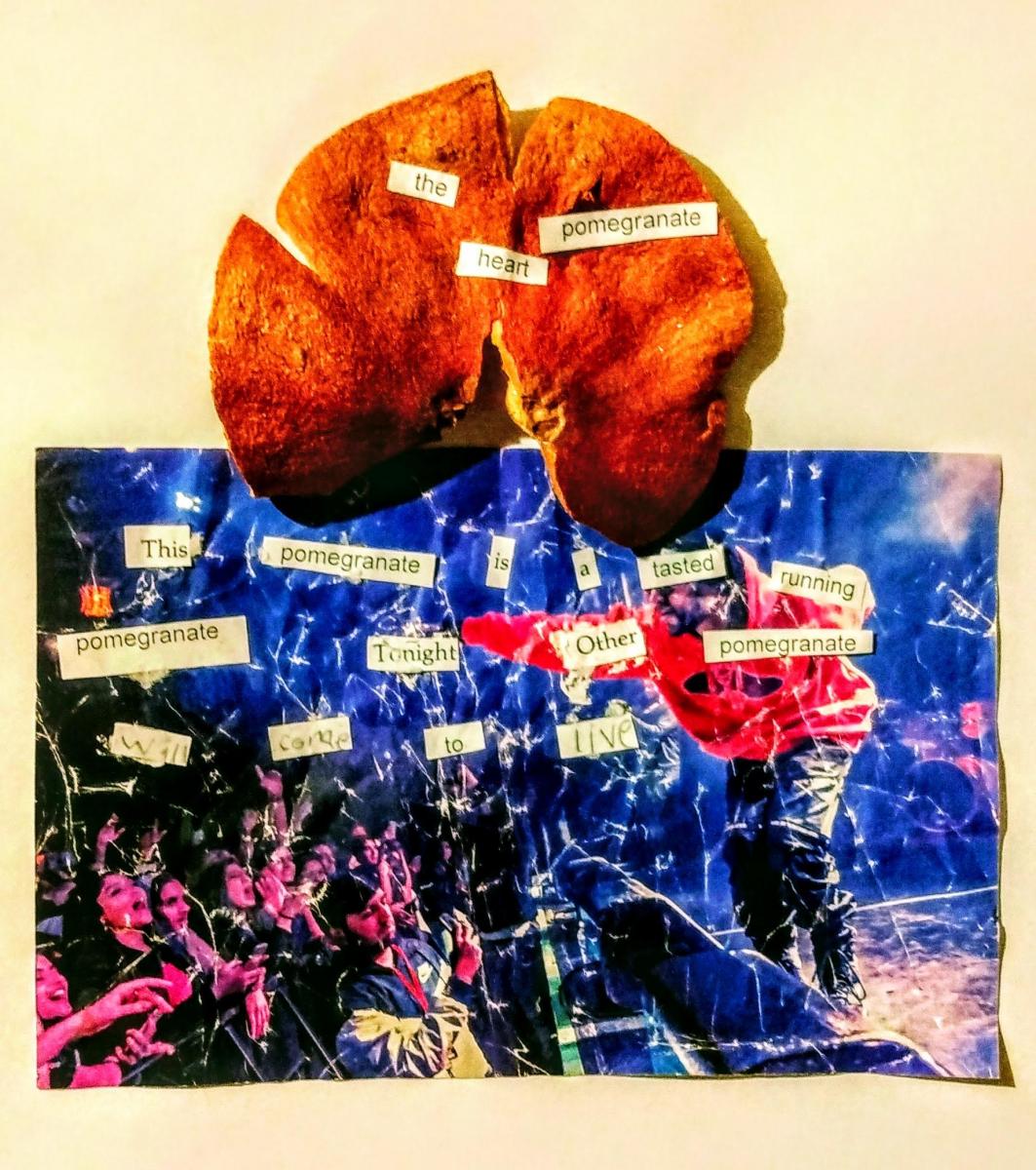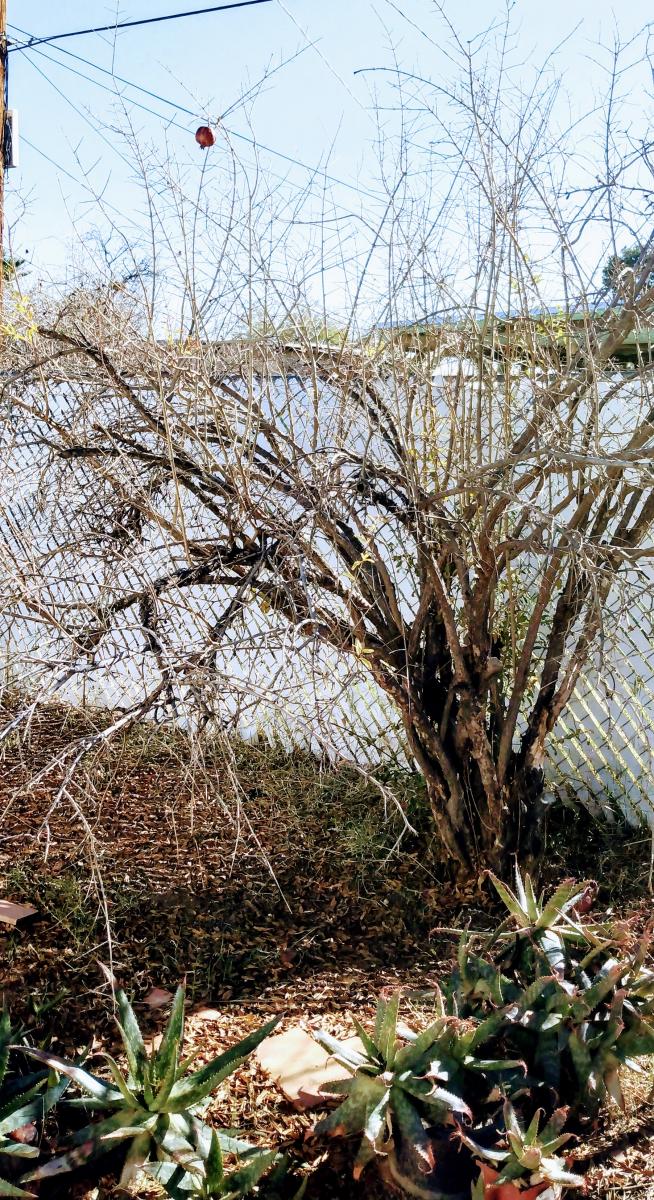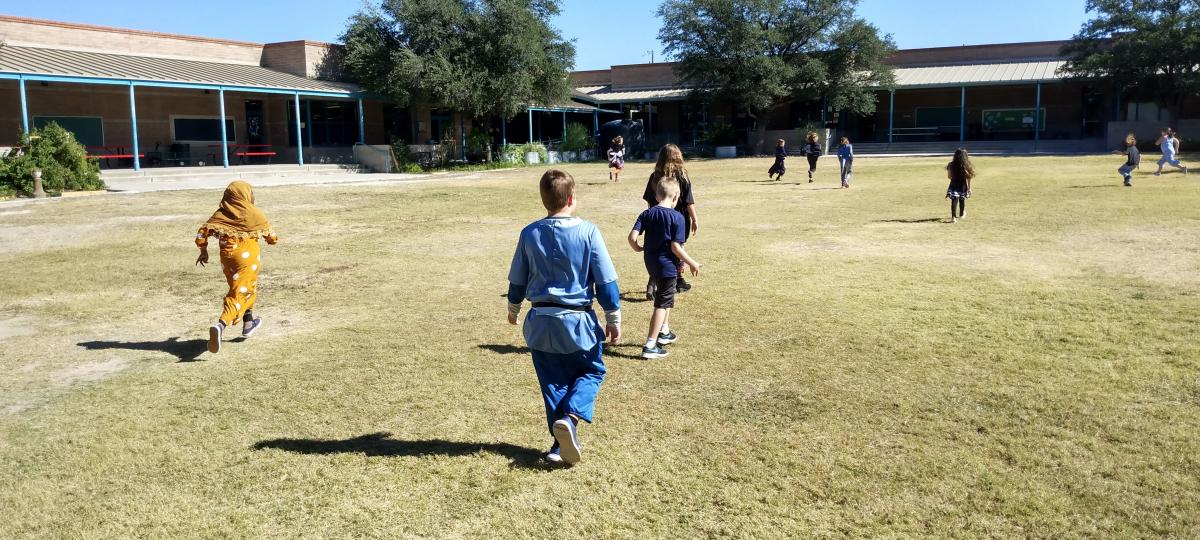After sixteen, full-time, high school English teaching years, I decided I needed a sabbatical year t o deeply recharge my dry, tired roots.
o deeply recharge my dry, tired roots.
The Poetry Center, however, invited me to be a Writing the Community teaching artist. They asked, would you like to work with third graders? My answer was an emphatic, instinctive, soul-affirming yes.
My experienced teacher partners at Drachman Montessori K-8, Rebecca Carreon and Elisa Busby, encouraged me to follow my instincts for a lesson arc and provide hands-on, sensory-based, poetry-centered experiences.
Since I’d recently harvested a large crop of heirloom white pomegranates from my grey-watered backyard tree, it seemed like a synchronistic invitation to share some “poemagranate” magic with the youngsters.
My intention for the residency was to teach students how we can come into friendly relationship with the plants of our desert lands. Young people are naturally attuned to playfulness, so I knew if I modeled a spirit of delight for an exploration of plants, our play would naturally inspire poetry, a celebration in words.
In my kitchen the morning of my first visit, I split fresh pomegranates open and placed a handful of pomegranate arils inside twelve little baggies (one for each student). I also brought along dried, whole pomegranates that I’d collected from the previous season’s fallen crop, the pomegranate skins I cleaned and dried for turning into tiny poetry canvases, and poems and stories about pomegranates to share aloud.
As the kids joined me at a crowded picnic table in the open air, they asked me endless questions about the little bags of treats I brought. I invited them to taste pomegranate arils, to smell pomegranate rinds, to touch hard pomegranate globes, to listen to words of pomegranate poems, and to see using what I called their mind’s eye the pictures in the poetry I shared. After ringing the gold bell I brought from my home altar, I told them to open their eyes and share what they saw. Many of their utterances worked as spontaneous poems, in the case of this one by Felicity R:
I saw a little person made of sunshine dancing
on pomegranate tree
leaves. Leathery flower
blooms. There were vines growing out of
her fingertips. Yellow
and red.
At the end of that visit on September 19, I reminded the kids that Autumn Equinox on September 21 is associated with the myth of Persephone, who goes down in the underworld with Hades after she eats six pomegranate seeds. I let them choose a pomegranate skin for the next lesson, which I promised to bring when I came back.
 The recipe for my success at my Drachman residency was a combination of ritual, scaffolding, and making things with our hands. Each visit, the kids clamored to ring my bell, hold the talking stone, and pick an oracle card. We gathered in ritual space each week, sitting criss-cross applesauce, and I’d read a poem or play one from Voca, the Poetry Center's online repository of oral readings.
The recipe for my success at my Drachman residency was a combination of ritual, scaffolding, and making things with our hands. Each visit, the kids clamored to ring my bell, hold the talking stone, and pick an oracle card. We gathered in ritual space each week, sitting criss-cross applesauce, and I’d read a poem or play one from Voca, the Poetry Center's online repository of oral readings.
For the second visit, I scaffolded a hands-on activity by preparing individualized baggies with the ingredients for a poem sculpture: dried pomegranate skins, a colorful image torn from a magazine, and a handful of words I'd cut out from paper and gleaned from mind's eye share-outs from the previous week and words from the poems I had read aloud. The teachers passed out glue, toothpicks, and silicone mats. The kids generated "poemagranate collage-sculptures" from this pre-prepared kit of materials. The cut-out words inspired both literacy and inquiry: "What does this word say?" and "I want to find the word…" showed evidence of reading and writing in equal measure. All twelve were able to create stunning poems and art out of the experiment, all in about 30 minutes, since we spent the first part of the hour lesson passing around a yogurt cup terrarium of a leaf-footed bug I'd caught (and later returned) to my pomegranate tree so they could examine the creature I'd written a poem about.
Some of my favorites from the set:
Juicy Comes to the Pomegranate, by Zeinab H.
The pomegranate blooms
after love gives work
Pomegranate window parrots
of you face whispering
Essence its body
Untitled, by Andrés R-L.
Everyone sounds excited but the magic light is
gone but comes back.
Fluffy and wiggle like on purpose.
No night would get
that story that morning.
Rubies Gleaming, by Nathan S.
Leaves and bright quarters tell
a sweet, reminded now
the tongue tried,
never handed.
Desert Listening, by Nevaeh Q.
No words what excites now to a fresh gleaming
 At the end of the residency, the class gifted me with a clay pot with each child’s name and twelve painted pomegranates. The residency had culminated into a reciprocal cycle among me, the kids, and the pomegranate tree, of giving gifts and celebrating our appreciation for our beautiful, desert-adapted lives. My hope is that whenever the kids see or eat a pomegranate in the future, they'll think about poetry and connect in joyful memory to the relationships we created.
At the end of the residency, the class gifted me with a clay pot with each child’s name and twelve painted pomegranates. The residency had culminated into a reciprocal cycle among me, the kids, and the pomegranate tree, of giving gifts and celebrating our appreciation for our beautiful, desert-adapted lives. My hope is that whenever the kids see or eat a pomegranate in the future, they'll think about poetry and connect in joyful memory to the relationships we created.
On the last day of my residency, I took a picture of the backyard pomegranate tree that, at the start of the fall, had been resplendent with green leaves and heavy with fruit, but now was completely bare, except for a few withered, yellow leaves and one lone pomegranate hanging in the high branches that I hadn't been able to pick. I was filled with gratitude--and some bittersweet Demeter grief--that our shared time with Persephone had come to an end.
Poetry, like nature, thrives within a cycle of life and death. I think a meaningful poetry lesson will always connect to the unique time and place it's dwelling in. Next semester, when I (hopefully) teach a different group of kids at Drachman Montessori, we won't focus on pomegranates. There'll be another relationship to plants, animals, or other natural forces to explore. Poetry naturally flourishes from our particular and loving relationships to our local environment and community, to the rhythms of each season.
Therefore, in offering my formula for making a poetry lesson plan, I invite you to ask yourself, what plants and animals are we connected to in our place, and how can we bring the magic and delight of our unique connection alive in words and art?
It was these question-seeds that shimmered at the jeweled heart of every poemagranate-inspired lesson I taught.

Taylor Johnson was born in Washington, DC, raised in Western Maryland, and transplanted to the Sonoran Desert since 2002. She earned her MFA in Creative Writing with a concentration in Poetry from the University of Arizona in 2007, and then went on to teach English to high schoolers for the next 15 years. In May 2022, she stepped away from full-time teaching to pursue a solopreneur venture as a nightly dreamworker and freelance educator. She began her career as a visiting poet in 2005 when she was still a young mom, wearing her infant in a rainbow sling while teaching poetry lessons to young elementary students through a Poetry Center residency, and then later as a graduate student working with high school students at Cholla and Desert View. Currently, she is focused on writing down her dreams and sorting through way too many old journals, mining for hidden gems. Website: symbodythedream.com.

